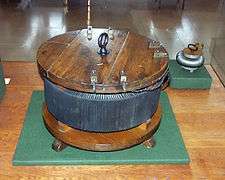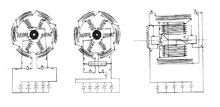Károly Zipernowsky

Károly Zipernowsky (4 April 1853 in Vienna – 23 November 1942 in Budapest)[1] was a Hungarian electrical engineer. He was the co-inventor of the transformer and other AC technologies.
Biography



Zipernowsky, with Ottó Bláthy and Miksa Déri, all of Ganz and Company, were researching ways of increasing efficiency of electrical power transmission. They experimented with power supplies and current transformation, which led to the invention of the ZBD alternating current transformer in 1885. The ZBD system is based on a closed-iron ring core with an arbitrary diameter and a coil around the core, which conducts AC current. Their system converted higher voltage suitable for energy transmission to lower "service"-level voltage (step-down transformer). Nikola Tesla then proposed the use of step-up transformers, which would output higher voltage current than they received. This principle is widely used for power transmission over long distances all over the world.
References
- ↑ Dreyblatt, Arnold. "Who's Who in Central & East Europe 1933". dreyblatt.de. Retrieved 14 March 2014.
External links
- Technical University of Budapest. "Károly Zipernowsky". Budapest, 1996.
- His life
¨